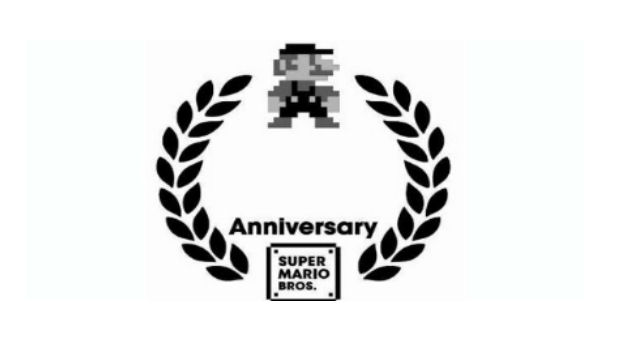This week marks the 25th anniversary of the release of Super Mario Bros., a game that started a franchise that revolutionized the video game industry not once, but twice. First, by popularizing side-scrolling action titles, and later, 3D action gaming. Super Mario Bros. has spawned more spin-offs and sequels than any other game series in history. The story of Super Mario Bros never gets much credit. Fundamentally, each game starts at point A and moves to point Princess, but there is a lot of nuance to the Mario world that most people overlook. The Mario games are an epic sci-fi/fantasy narrative, layered with references to classic Germanic fairy tales, Edgar Rice Burroughs, Dante Alighieri, and French mythology.
When Mario burst onto the scene, video games were still in kindergarten. You know, back when the fact that a video game existed at all was novelty enough. On many occasions, this resulted in the electronic equivalent of smearing paste and dried macaroni on construction paper and calling it art. Story was nonexistent. Games usually consisted of little more than the instruction “DO THIS!” Then you did what the game told you to do, accumulating points until you died. The game with the most story and character prior to Mario was about a wheel of yellow cheese eating white dots and running away from ghosts. So in fact, that A-to-Princess story structure I mentioned before was actually quite revolutionary. A story goal (save Princess Peach) is attached to the technical goal (reach the end of the level without dying). It really is the Gutenberg moment of video games, or like The Great Train Robbery in the early days of film. It wasn’t necessary to show the entire level at once. The elements of the level could scroll past the screen, changing as the player progressed through the level. It changed everything. All games owe something to Mario.
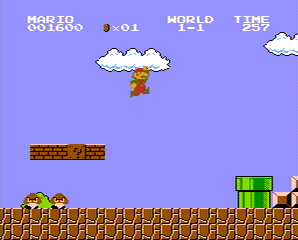 Mario’s fame has made his face one of the most recognizable in the world. Surely you can hum the theme song, and the underworld theme, and the underwater theme. You probably can name most of the supporting cast, including his big little brother Luigi, Princess Peach, Toad, and villainous kingpin, Bowser Koopa. Bowser’s kids, the koopalings, may be harder to name. They’re named for famous musicians like Iggy Pop and Roy Orbison.
Mario’s fame has made his face one of the most recognizable in the world. Surely you can hum the theme song, and the underworld theme, and the underwater theme. You probably can name most of the supporting cast, including his big little brother Luigi, Princess Peach, Toad, and villainous kingpin, Bowser Koopa. Bowser’s kids, the koopalings, may be harder to name. They’re named for famous musicians like Iggy Pop and Roy Orbison.
As with any large creative property, the story continuity is littered with contradictions and errors. The Mario universe is no exception; the hero has appeared in over 200 video games, three television series, a much maligned live action feature film, and a series of choose your own adventure books. Even so, the basic premise is often the same. Mario and his brother Luigi run a plumbing business in Brooklyn. Mario goes down a pipe and winds up in a magical land called The Mushroom Kingdom, a country ruled by the benevolent Princess Peach Toadstool (sometimes her father). King Bowser, the ruler of a neighboring kingdom (perhaps the Under-Kingdom), kidnaps Peach. Mario journeys across the Mushroom Kingdom, combating Bowser’s henchmen and children and other assorted monsters. He defeats Bowser and rescues the Princess. Much has been said about the love triangle between these three characters. A freudian analysis is predictable, with Mario as the ego, Peach the superego, and Bowser the obvious id. Some think Bowser has a crush on Peach, and all of Mario’s adventures stem from the evil king’s unrequited love. While this casts Bowser as a poetic antihero, I suspect Bowser’s intentions are more like Jaffar’s in Disney’s Aladdin: Bowser wants to marry Peach only so he can rule the Mushroom Kingdom.
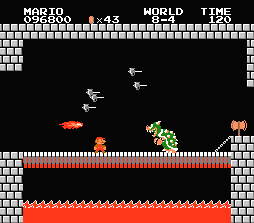
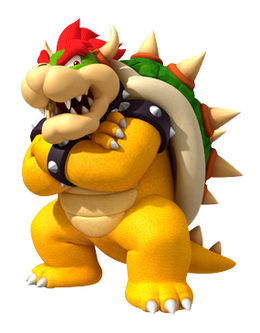
Bowser is an interesting character because he has changed so much over the years. Beginning as a frightening and hard-to-kill rival of Mario, he was relegated to comic relief status in the Super Nintendo era, the butt of many jokes in Super Mario RPG and other games. In recent games, he is back in his proper role as nemesis, and apparently, he has been juicing, because Bowser is a lot bigger than I remember. And just what is Bowser, anyway? A dragon? A spiky shelled turtle? He is a koopa. King Koopa. That’s all there is to it. Some think Bowser is modeled after the tarasque, a mythical beast from the south of France. Others think he is based on the kappas of Japanese folklore. Bowser is stubborn, never learning his lessons. Like the best supervillains, he keeps coming back. His schemes become more elaborate (“I will take over the universe by collecting power stars!!!!!”), but he always fails. Oh Bowser, didn’t you learn this lesson three years ago? Mario always wins. And just what is Bowser king of? King of the Koopas? That paints him as the leader of an oppressed ethnic minority, adding a disturbing tinge to the mythos. I prefer to think of him as the ruler of one of the Mushroom Kingdom’s eight provinces, each of which has a regional governor (a “king” in Super Mario Bros. 3) and are divided by ecosystem (desert world, water world, sky world, etc). It’s a common theme in Japanese literature for a regional governor to take a stab at the throne, so perhaps this is an accurate interpretation. Bowser rules the Dark World, a subterranean volcanic world, a world that in many ways resembles Dante’s classical interpretation of Hell. In Japan, Bowser is known as Great Demon King Koopa.
Peach is a less interesting character. Unlike feminist ninja Princess Zelda and intergalactic bounty hunter Samus Aran, Peach is a helpless wet blanket who is always getting kidnapped. Mario can do better. But who am I to question twoo wuv? She can bake a mean cake, apparently. And if Mario’s girth is any indication, the way to his heart is through his overalls-covered stomach.
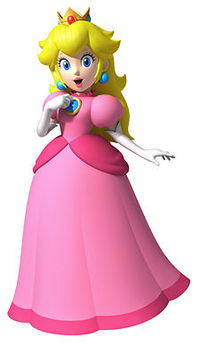 The tradition in so many classic fairy tales is for the hero to rescue the princess locked in the spooky castle. So it is with Mario. He goes on a quest, slays a dragon, saves a princess. The hero’s journey. What makes Mario unique is his profession. He is not some boring cookie cutter prince. He is a plumber, a blue collar hero, out of place in a foreign fantasy world filled to the brim with bizarre landscapes and weird creatures.
The tradition in so many classic fairy tales is for the hero to rescue the princess locked in the spooky castle. So it is with Mario. He goes on a quest, slays a dragon, saves a princess. The hero’s journey. What makes Mario unique is his profession. He is not some boring cookie cutter prince. He is a plumber, a blue collar hero, out of place in a foreign fantasy world filled to the brim with bizarre landscapes and weird creatures.
There are many parallels between Mario and Burroughs’ Barsoom novels. A tough everyman is transported to a faraway place where he has the ability to jump to great heights. He battles green monsters, rides a mount with a frog-like mouth who is loyal as a dog, and rescues a princess. There are also airships.

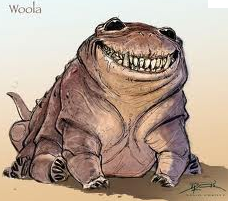 In recent games, Mario has traveled to the stars, and Nintendo has taken more care with continuity. In Super Mario Galaxy, Mario meets a little luma, sort of a literal starman. Luma decides to live under Mario’s hat and give him a spinning ability. In all subsequent Mario games, the plumber can now spin, and the luma is there, in the New Super Mario Bros. Wii and Bowser’s Inside Story. At the end of New Super Mario Bros. Wii, Bowser grows to Godzilla proportions. In the next game, Super Mario Galaxy 2, Bowser is still enormous. Time will tell if this trend continues.
In recent games, Mario has traveled to the stars, and Nintendo has taken more care with continuity. In Super Mario Galaxy, Mario meets a little luma, sort of a literal starman. Luma decides to live under Mario’s hat and give him a spinning ability. In all subsequent Mario games, the plumber can now spin, and the luma is there, in the New Super Mario Bros. Wii and Bowser’s Inside Story. At the end of New Super Mario Bros. Wii, Bowser grows to Godzilla proportions. In the next game, Super Mario Galaxy 2, Bowser is still enormous. Time will tell if this trend continues.
Many people do Mario a disservice by saying the whole game is a simple drug metaphor. That is a naive opinion. Any game, song, or story that isn’t strictly literal could be construed as a drug metaphor. “Teehee. He eats a mushroom, and then everything gets trippy!” The Mario Myth is so much more than that. It is the great epic fantasy you never knew you knew.
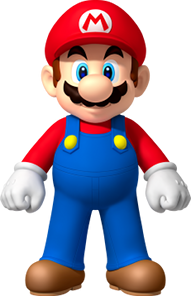 Matt London is an avid gamer, author, and filmmaker who lives in New York City. He is a graduate of the Clarion Writer’s Workshop, as well as a columnist for Tor.com, Lightspeed, and Realms of Fantasy. His fiction is out right this second in the anthology The Living Dead 2. He holds a BFA in Film Production from New York University.
Matt London is an avid gamer, author, and filmmaker who lives in New York City. He is a graduate of the Clarion Writer’s Workshop, as well as a columnist for Tor.com, Lightspeed, and Realms of Fantasy. His fiction is out right this second in the anthology The Living Dead 2. He holds a BFA in Film Production from New York University.










